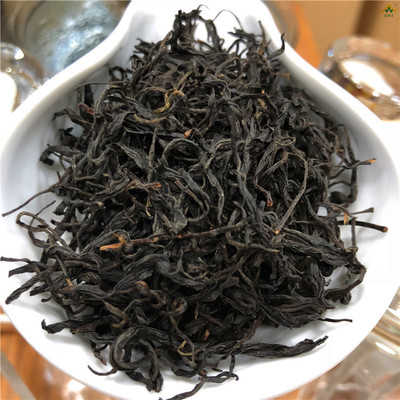Black tea, a fully fermented tea, is made from new tea buds and leaves through the processes of withering, rolling, fermentation and drying. The color, aroma and taste of black tea depend on such factors as the level of oxidation and the characteristics of the tea leaves. In China, black tea is famous for the reddish color of its liquid and brewed leaves. Black tea originated from China and was introduced to Europe in the 17th century.
There are many types of black tea, and each has its own distinctive color, aroma and flavor.

Keemun Black Tea is mainly produced in Qimen County, Anhui Province, China. As a traditional Chinese congou, it dates back to more than 100 years ago. It enjoys a high reputation in the world and is honored as “the queen of black tea”. It is the favorite drink of the Queen and the Royal Family of Britain.
Yunnan Black Tea, also known as Dianhong Tea, is a high-end Chinese black tea. It is produced in Lincang, Baoshan, Fengqing, Xishuangbanna, Dehong and other places in Yunnan Province, China. Its liquid is brassy, golden orange in color and has a gentle, sweet aroma.

Lapsang Souchong, the world’s earliest black tea, was created by tea growers in the Ming Dynasty in Wuyi Mountains, Fujian Province, China. As early as the 17th century, Lapsang Souchong was exported to Europe and became very popular. It was selected as the royal black tea in England and then evolved into the famous “afternoon tea”. With a strong aroma, Lapsang Souchong is deeply loved by many tea drinkers. Its liquid is orange brown in color, and has a unique, smoky taste. Its leaves are generally smoke-dried over pinewood fires, thus developing a distinctive flavor of smoky pine.
Sichuan Black Tea, one of the three most famous black teas in China, is grown in Yinbin City, Sichuan Province, China. It is made from fine downy buds. The liquid is amber in color and tastes smooth.

Ninghong Black Tea, one kind of the earliest black tea in China, is grown in Xiushui County, Jiangxi Province, China. It is dark and bright in color and has a fresh and mellow flavor.
Hunan Black Tea is mainly produced in Anhua County, Yiyang City, Hunan Province, China. It is red in color and tastes sweet. It can help you to build healthy bones.

Fujian Black Tea is grown in Zhenghe, Fuding and Fu’an Counties, Fujian Province, China. The liquid is red in color and has a strong flavor.
Yichang Black Tea is mainly grown in Yichang City and Enshi Tujia and Miao Autonomous Prefecture in Hubei Province, China. It is straight and tight in shape and bright and dark in color. Drinking Yichang Black Tea can help you to prevent heart disease.

Red Plum Classic is mainly grown in West Lake region, Hangzhou City, Zhejiang Province, China. High-quality Red Plum Classic Tea is covered by golden fuzz, making it a well-received tea product. It can help you to quench thirst, nourish stomach, and improve eyesight.
Zhejiang Black Tea is mainly grown in Shaoxing City, Zhejiang Province, China. The liquid is clear and loved by many tea lovers for its unique flavor. It is mild in nature and has the effect of nourishing and protecting the stomach.
1. Black tea is rich in caffeine, which helps stimulate the nerve center. So, drinking black tea can help you to think in a more concentrated manner and enhance memory.
2. Drinking black tea in summer can quench thirst and relieve heat. The polyphenols, sugars, amino acids and pectin in the tea react chemically with the saliva and stimulate the secretion of saliva, thereby causing the mouth to feel moisturized.
3. The combination of caffeine and aromatic substances in black tea increases blood flow to the kidneys and increases urine output.
4. Polyphenols in black tea have an anti-inflammatory effect.
5. Polyalkali in black tea can also absorb heavy metals and alkaloids and decompose them.
6. Polyphenols in black tea can inhibit the destruction of bone cell material, and the bones of people who use black tea are stronger.
7. Antioxidants in black tea can completely disrupt the spread of chemicals in cancer cells.
8. Drinking black tea with sugar and milk can help you to reduce inflammation and protect gastric mucosa.
1. Put tea leaves into the teapot - generally, 4 grams of tea per 200 ml of water.
2. Brew temperature should be kept at 90-95 °C.
3. Pour the water into the teapot.
4. Wait for 45 seconds and pour the liquid into small cups to smell and sip.
